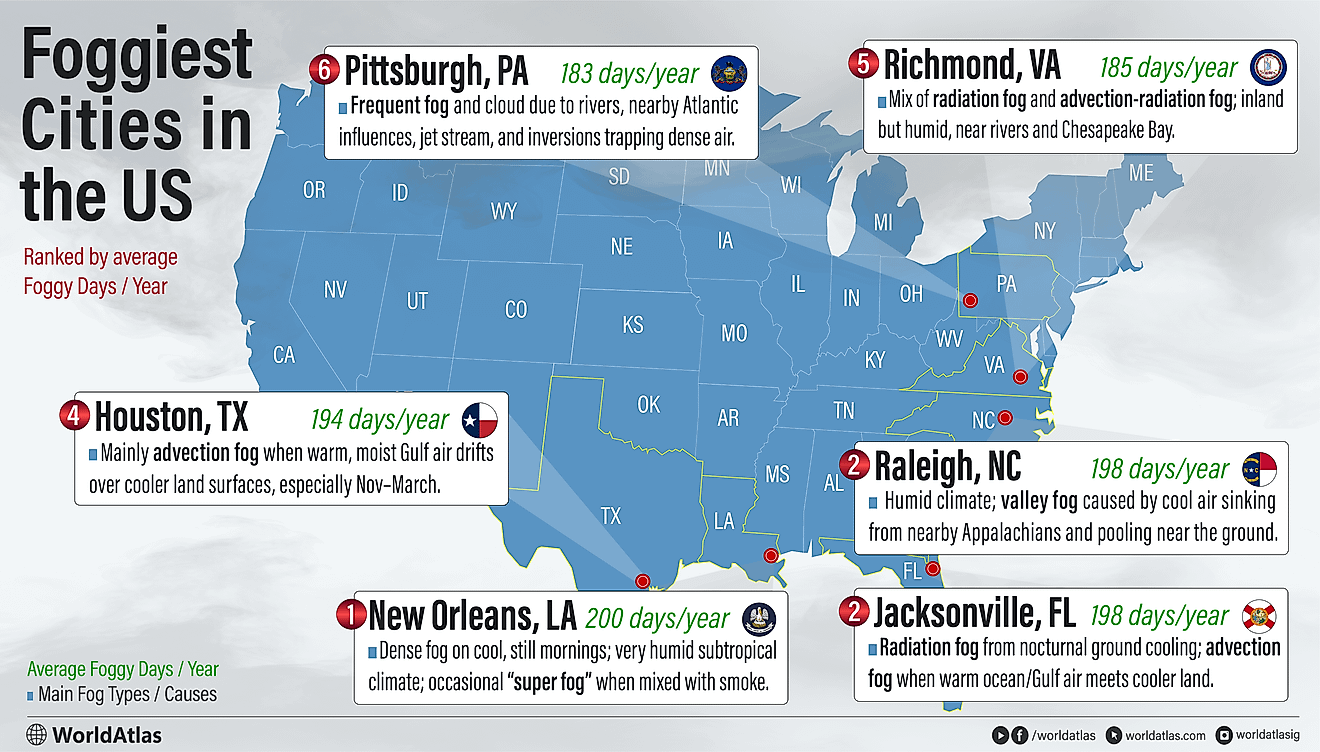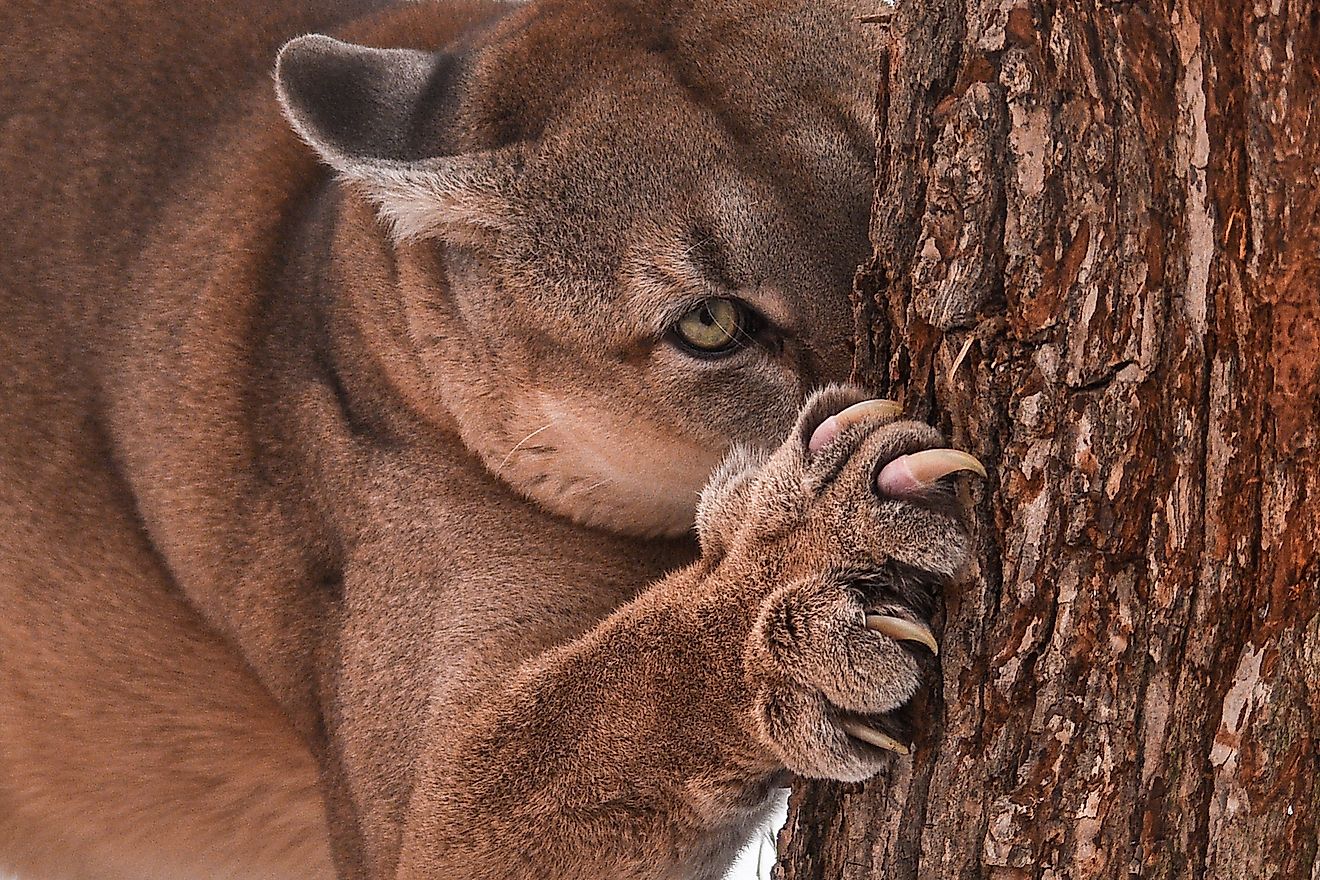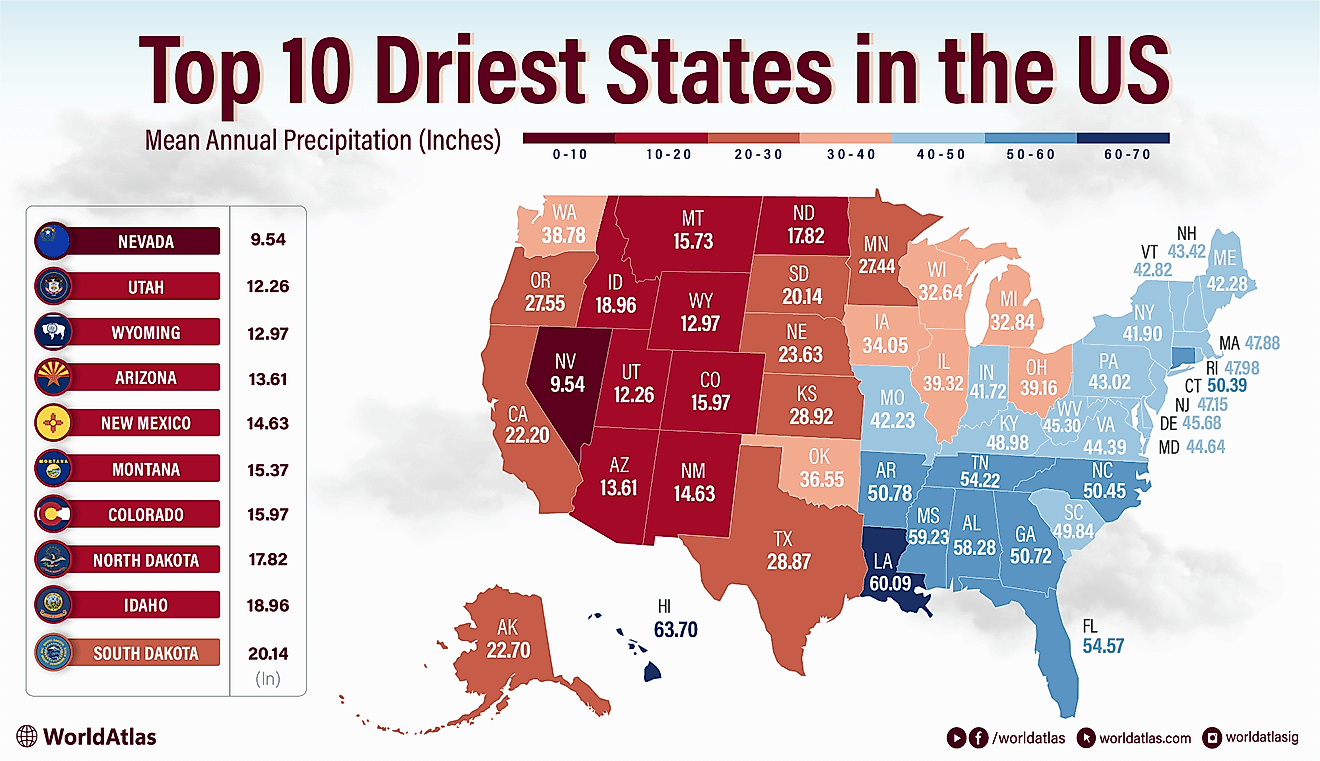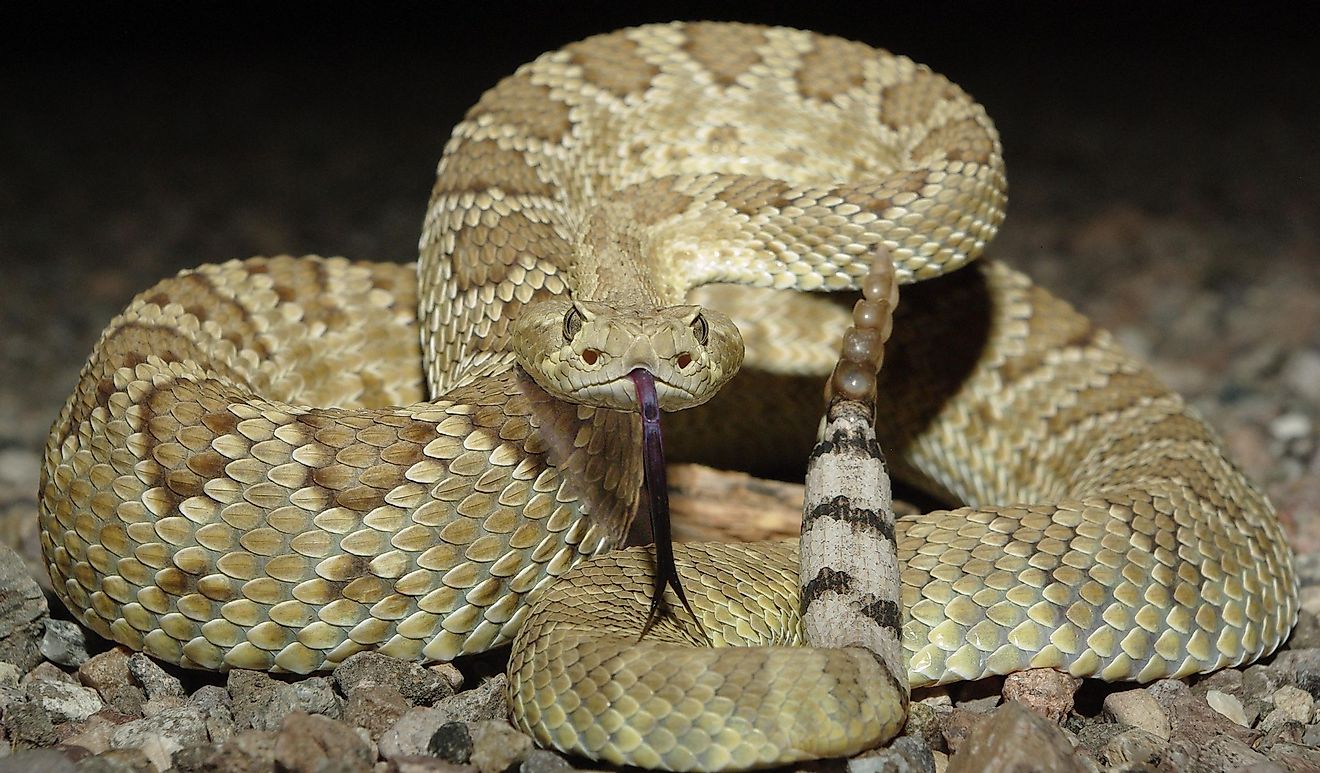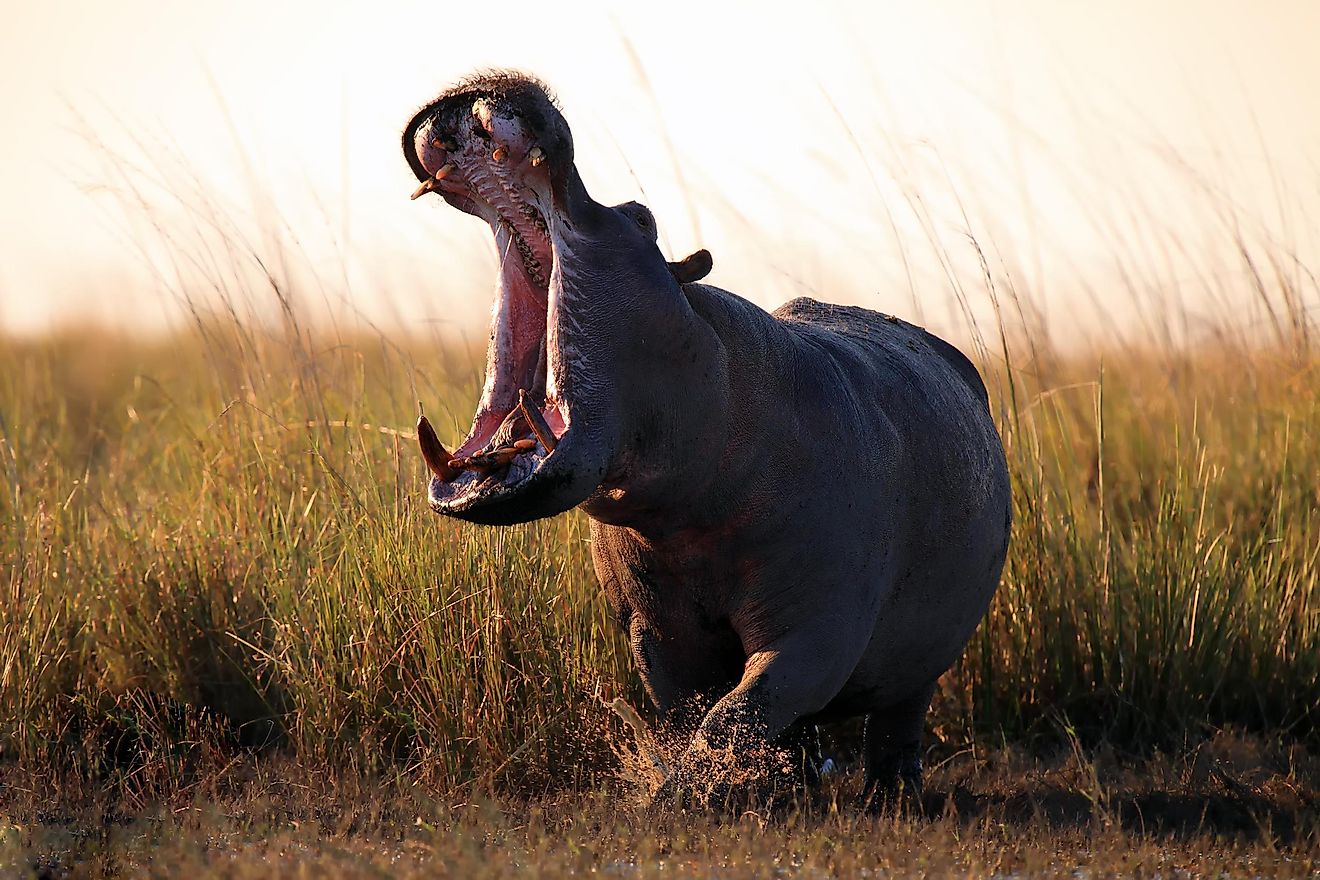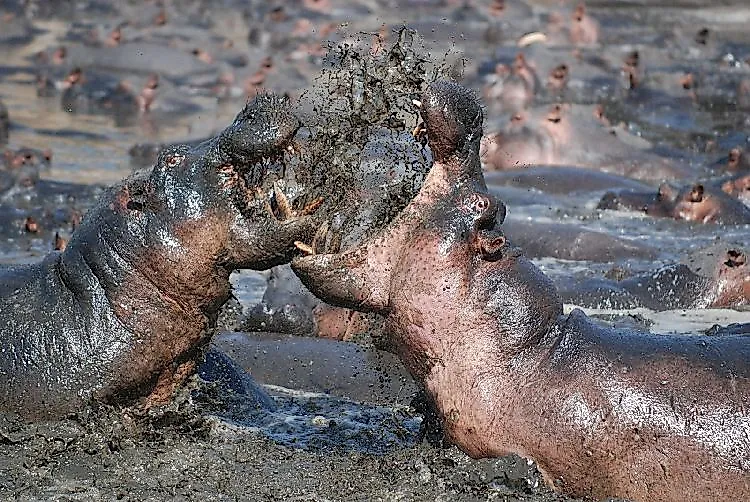
Hippopotamus
Physical Description
The Common Hippopotamus (Hippopotamus amphibious), a Greek-derived name that can be translated to mean “river horse”, is the third-largest terrestrial mammal, following only the white rhinoceros and the elephant. Biological taxonomists believe that they are closely related to whales, dolphins, and pigs. Hippos measure 12 to 15 feet in length, are 5 feet tall at the shoulder, and often weigh as much as 3.5 tons. The Hippopotamus has stumpy, short legs, with each foot having four webbed toes to support its plump and bulky body. The position of their ears, eyes and nostrils are on the top of its head, which allows them to observe their surroundings while the rest of their bodies are completely submerged in water. Hippo skin is gray with very few hairs, with a distinctively pink belly and pink colorations around the eyes, ears, and mouths. The two living species in the family Hippopotamidae are the “vulnerable” Common Hippo and the “endangered” Pygmy Hippo.
Diet
Similar to other ungulates, hippopotamuses are herbivores that primarily consume grass. They forage at night, beginning at sunset, and can travel considerable distances from their aquatic habitats to locate suitable grazing areas. During a feeding session, which lasts approximately four to five hours, they can consume around 88 pounds of grass, a small fraction of their body weight. Their ability to thrive on such relatively low-energy foods is attributed to their sedentary nature, which results in lower energy expenditure relative to their body size.
Habitat and Range
Hippopotamuses inhabit slow-moving rivers and lakes that are bordered by grasslands. They can be found in Southern and Central Africa, particularly near the Nile River and south of the Sahara Desert. The common hippopotamus is not labeled as an endangered species but is considered "vulnerable," with an estimated population of 125,000 to 148,000 individuals worldwide. Major threats to their populations include poaching for their ivory tusks and meat, as well as habitat loss due to the expansion of human agricultural activities into their natural environments.
Where do Hippos Live?
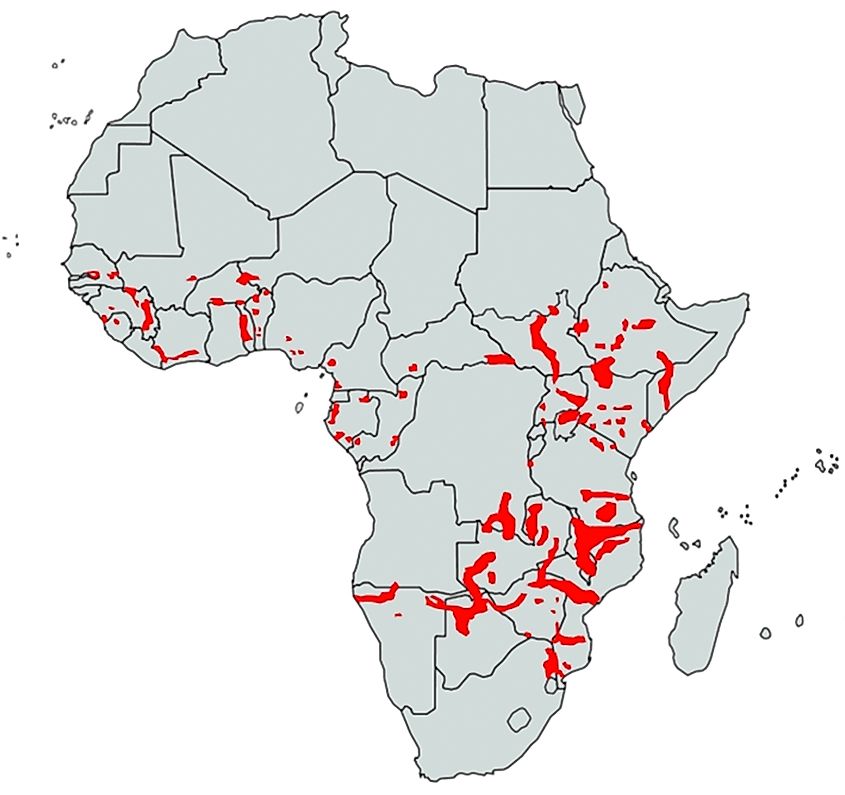
Behavior
Hippos spend most of the day submerged in slow-moving waters to withstand the heat of the African savanna. They form groups known as "bloats," consisting of around 15 to 30 individuals, with the strongest male, or "bull," leading each group. The size of these groups can increase during droughts, as many hippos gather near scarce water sources. They are among the most aggressive mammals in the world. Bulls frequently engage in fights over territory, using their large canines to inflict wounds on each other, and they can become very hostile toward any perceived threats. Despite their massive size, they can sprint at speeds of up to 14 miles per hour, but only for short distances.
Reproduction
In each bloat, the dominant male is exclusively responsible for mating with females. If another male attempts to mate, the dominant bull will scare him off by bellowing loudly and opening its jaws wide. Should the intruder refuse to retreat, a fierce battle ensues, with the victor earning the right to mate with the females of that bloat. Typically, hippos mate in water. Females reach reproductive maturity around six years of age. After copulation and conception, hippos experience a gestation period of about eight months, generally giving birth to a single calf every two years. Birth occurs underwater. Hippos can nurse their young both underwater and on land, as these calves can close their nostrils and ears while feeding when submerged.
Facts About Hippos
| Animal Facts | Info |
|---|---|
| Length | 10-11 ft. |
| Height | 5 ft. |
| Weight | 3300-7000 lbs. (Male) 3300 lbs. (Female) |
| Sexual Maturity | 6-10 years although It is unlikely that young bulls are allowed to breed effectively until much older at about 20 years (Male)7-12 years (Female) |
| Birth Season | Coincides with rainy season |
| Gestation | 240 days |
| Number Of Young | Single Young (2 years between pregnancies) |
| Habit | Sociable, living in groups of 10-20 but can be up to 150 |
| Lifespan | 45-50 years |
| Diet | Grasses |
| Related Species | The hippo family includes the rarer pygmy hippopotamus |
